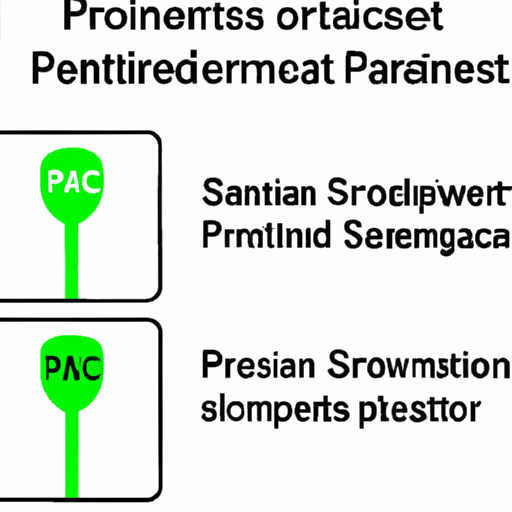
Signal converters are essential components in various industries, as they play a crucial role in converting signals from one form to another. These devices are used to convert analog signals to digital signals, or vice versa, to ensure compatibility between different systems and devices. As a result, signal converters have become a key technology in industries such as telecommunications, automotive, industrial automation, and consumer electronics.In recent years, there has been a significant increase in the number of patents related to signal converters, as companies strive to develop innovative solutions to meet the growing demand for high-performance and reliable signal conversion technology. In this article, we will explore some of the key industries that contain important patents related to signal converters, and discuss the impact of these patents on the industry as a whole.Telecommunications IndustryThe telecommunications industry is one of the largest users of signal converters, as these devices are essential for converting signals between different communication protocols and standards. With the rapid growth of mobile and wireless communication technologies, the demand for high-performance signal converters has increased significantly in recent years.Many companies in the telecommunications industry have filed patents related to signal converters, covering a wide range of technologies such as digital signal processing, analog-to-digital conversion, and signal conditioning. These patents are crucial for protecting the intellectual property of companies and ensuring that they can continue to innovate and develop new products in this competitive market.Automotive IndustryThe automotive industry is another key user of signal converters, as these devices are used in a wide range of applications such as engine control systems, navigation systems, and entertainment systems. With the increasing complexity of modern vehicles and the growing demand for advanced features and functionalities, the need for high-performance signal converters has become more important than ever.Many companies in the automotive industry have filed patents related to signal converters, covering technologies such as data acquisition, signal processing, and communication interfaces. These patents are essential for protecting the innovations of companies and ensuring that they can continue to develop new products and technologies to meet the evolving needs of the automotive market.Industrial Automation IndustryThe industrial automation industry is another important user of signal converters, as these devices are used in a wide range of applications such as process control systems, robotics, and motion control systems. With the increasing adoption of Industry 4.0 technologies and the growing demand for smart and connected devices, the need for high-performance signal converters has become more critical in industrial automation applications.Many companies in the industrial automation industry have filed patents related to signal converters, covering technologies such as signal conditioning, data conversion, and communication protocols. These patents are crucial for protecting the intellectual property of companies and ensuring that they can continue to innovate and develop new products to meet the changing needs of the industrial automation market.Consumer Electronics IndustryThe consumer electronics industry is also a significant user of signal converters, as these devices are used in a wide range of applications such as audio and video equipment, smartphones, and wearable devices. With the increasing demand for high-quality audio and video experiences, the need for high-performance signal converters has become more important in consumer electronics applications.Many companies in the consumer electronics industry have filed patents related to signal converters, covering technologies such as audio and video processing, data conversion, and communication interfaces. These patents are essential for protecting the innovations of companies and ensuring that they can continue to develop new products and technologies to meet the evolving needs of the consumer electronics market.ConclusionIn conclusion, signal converters are essential components in various industries, and the demand for high-performance and reliable signal conversion technology continues to grow. Many companies in industries such as telecommunications, automotive, industrial automation, and consumer electronics have filed patents related to signal converters, covering a wide range of technologies and applications.These patents are crucial for protecting the intellectual property of companies and ensuring that they can continue to innovate and develop new products to meet the evolving needs of their respective industries. As the demand for signal converters continues to increase, it is likely that we will see more patents related to this technology in the future, as companies strive to stay ahead of the competition and deliver cutting-edge solutions to their customers.

Signal converters are essential components in various industries, allowing for the seamless conversion of signals from one form to another. Whether it's converting analog signals to digital or vice versa, signal converters play a crucial role in ensuring that data is accurately transmitted and processed. As such, it is important for professionals working with signal converters to undergo thorough product training to fully understand their functionality and capabilities.When designing a product training program for signal converters, there are several key considerations to keep in mind. These considerations will help ensure that trainees have a comprehensive understanding of how signal converters work and how to effectively use them in their respective industries.1. Understanding the basics of signal conversion: The first step in any product training program for signal converters is to provide trainees with a solid understanding of the basics of signal conversion. This includes explaining the difference between analog and digital signals, as well as the various types of signal converters available on the market. Trainees should also be familiarized with common terminology used in signal conversion, such as resolution, sampling rate, and signal-to-noise ratio.2. Hands-on experience: One of the most effective ways to learn about signal converters is through hands-on experience. Providing trainees with the opportunity to work with signal converters in a controlled environment will help them gain a better understanding of how the devices function and how to troubleshoot common issues. Hands-on training can also help trainees develop the skills needed to configure signal converters for specific applications.3. Application-specific training: Signal converters are used in a wide range of industries, each with its own unique requirements and challenges. As such, it is important to tailor product training programs to specific applications. For example, trainees working in the automotive industry may require training on how to use signal converters in vehicle diagnostics, while those in the medical field may need training on signal converters used in patient monitoring systems.4. Compliance and safety training: Signal converters are often used in safety-critical applications, such as in industrial control systems or medical devices. As such, it is important for trainees to receive training on compliance standards and safety regulations related to signal converters. This includes understanding how to properly install and maintain signal converters to ensure they meet industry standards and do not pose a risk to users.5. Troubleshooting and maintenance: Signal converters, like any electronic device, can experience issues over time. Trainees should be trained on how to troubleshoot common problems with signal converters, as well as how to perform routine maintenance to ensure optimal performance. This may include learning how to calibrate signal converters, update firmware, and replace faulty components.6. Continuing education: The field of signal conversion is constantly evolving, with new technologies and products being introduced regularly. As such, it is important for professionals working with signal converters to engage in continuing education to stay up-to-date on the latest developments in the field. Product training programs should include resources for trainees to access ongoing education opportunities, such as webinars, workshops, and industry conferences.In conclusion, product training for signal converters is essential for professionals working in industries that rely on accurate signal conversion. By considering the key factors outlined above, training programs can be designed to provide trainees with the knowledge and skills needed to effectively use signal converters in their respective applications. With a solid understanding of signal conversion principles and hands-on experience, professionals can confidently work with signal converters to ensure reliable data transmission and processing.
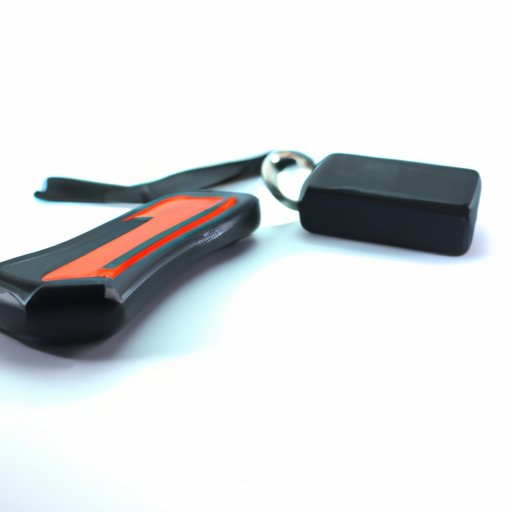
The highly anticipated release of the new Adjustable sensor is just around the corner, and consumers are eagerly awaiting its arrival. With its innovative design and advanced technology, this sensor is set to revolutionize the way we interact with our devices and surroundings.The Adjustable sensor is a versatile and adaptable device that can be customized to fit a wide range of applications. Whether you need to monitor temperature, humidity, light levels, or motion, this sensor has you covered. Its adjustable settings allow you to fine-tune its sensitivity and range, ensuring that you get the most accurate and reliable data possible.One of the key features of the Adjustable sensor is its wireless connectivity, which allows it to seamlessly integrate with your existing smart home or IoT system. This means that you can monitor and control the sensor remotely, giving you peace of mind and convenience wherever you are. Whether you're at home, at work, or on the go, you can stay connected to your environment and receive real-time updates on the conditions around you.Another standout feature of the Adjustable sensor is its long battery life, which ensures that you can rely on it for extended periods without needing to constantly recharge or replace the batteries. This makes it ideal for use in a variety of settings, from residential homes to commercial buildings to outdoor environments. With its durable construction and weatherproof design, this sensor is built to withstand the elements and provide reliable performance in any situation.In addition to its practical features, the Adjustable sensor also boasts a sleek and modern design that will complement any decor. Its compact size and discreet appearance make it easy to install and use without drawing attention or cluttering up your space. Whether you choose to mount it on a wall, place it on a shelf, or attach it to a surface, this sensor will blend seamlessly into your environment and provide valuable data without being obtrusive.The Adjustable sensor is also designed with user-friendliness in mind, with intuitive controls and a user-friendly interface that make it easy to set up and operate. Whether you're a tech-savvy enthusiast or a novice user, you'll find that this sensor is simple to use and offers a hassle-free experience. With its plug-and-play functionality and straightforward instructions, you can start using the sensor right out of the box and begin enjoying its benefits immediately.Overall, the Adjustable sensor is a game-changer in the world of smart technology and environmental monitoring. Its advanced features, wireless connectivity, long battery life, and sleek design make it a must-have device for anyone looking to enhance their living or working environment. Whether you're interested in improving energy efficiency, enhancing security, or simply staying informed about your surroundings, this sensor has you covered.So when can you get your hands on the new Adjustable sensor? The official release date is set for next month, and pre-orders are already available on the manufacturer's website. Don't miss out on this opportunity to upgrade your smart home or IoT system with the latest and greatest in sensor technology. Order your Adjustable sensor today and experience the future of environmental monitoring for yourself.

Adjustable sensors are a crucial component in various industries, including automotive, healthcare, and consumer electronics. These sensors are designed to detect changes in the environment and provide accurate measurements for a wide range of applications. As the demand for adjustable sensors continues to grow, market policies play a significant role in shaping the industry's growth and development.Market policies refer to the rules and regulations that govern the production, distribution, and sale of adjustable sensors. These policies are put in place to ensure fair competition, protect consumers, and promote innovation in the industry. In this article, we will explore the market policies that impact the adjustable sensor industry and how they influence the market dynamics.One of the key market policies that affect the adjustable sensor industry is intellectual property rights. Intellectual property rights protect the innovations and technologies developed by sensor manufacturers, giving them exclusive rights to their creations. This policy encourages companies to invest in research and development, leading to the creation of new and improved sensor technologies. By protecting intellectual property rights, companies can recoup their investments and continue to innovate in the industry.Another important market policy that impacts the adjustable sensor industry is product safety regulations. Adjustable sensors are used in a wide range of applications, from monitoring air quality to detecting motion in automotive systems. As such, it is crucial that these sensors meet strict safety standards to ensure they operate reliably and accurately. Product safety regulations help to protect consumers from faulty or substandard sensors, ensuring that only high-quality products are available in the market.In addition to intellectual property rights and product safety regulations, market policies also include trade policies and standards. Trade policies govern the import and export of adjustable sensors, ensuring that products meet certain quality standards and specifications. These policies help to create a level playing field for manufacturers and prevent the influx of low-quality sensors into the market. By adhering to trade policies and standards, companies can compete fairly and maintain the reputation of their products in the global market.Furthermore, market policies also include environmental regulations that impact the adjustable sensor industry. As sensors are used in a wide range of applications, they can have a significant impact on the environment. Environmental regulations aim to reduce the environmental footprint of sensor manufacturing and ensure that companies operate in a sustainable manner. By complying with environmental regulations, companies can minimize their impact on the environment and contribute to a more sustainable future.Overall, market policies play a crucial role in shaping the adjustable sensor industry and influencing its growth and development. By adhering to intellectual property rights, product safety regulations, trade policies, and environmental regulations, companies can create a competitive and sustainable market for adjustable sensors. These policies help to protect consumers, promote innovation, and ensure the long-term success of the industry. As the demand for adjustable sensors continues to grow, market policies will continue to play a vital role in shaping the industry's future.
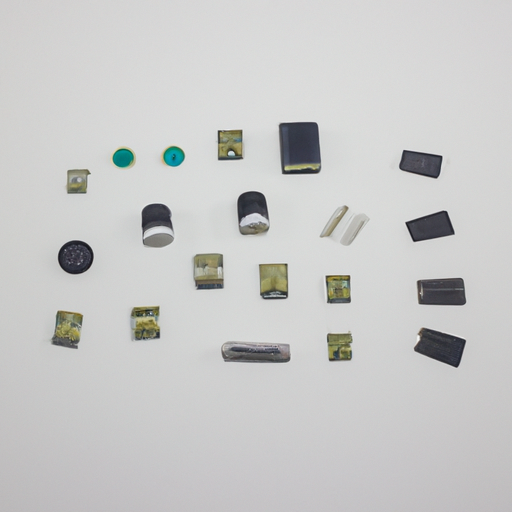
Fixed electrical sensors are devices that are used to detect changes in electrical signals and convert them into a measurable output. These sensors are commonly used in a wide range of applications, including industrial automation, automotive systems, and consumer electronics. There are several mainstream models of fixed electrical sensors that are widely used in various industries. In this article, we will discuss some of the most popular models of fixed electrical sensors and their applications.1. Proximity SensorsProximity sensors are one of the most commonly used types of fixed electrical sensors. These sensors are used to detect the presence or absence of an object without any physical contact. Proximity sensors work by emitting an electromagnetic field and detecting changes in the field caused by the presence of an object. These sensors are commonly used in industrial automation applications, such as detecting the position of a machine part or monitoring the movement of objects on a conveyor belt.2. Photoelectric SensorsPhotoelectric sensors are another popular type of fixed electrical sensor. These sensors use light to detect the presence or absence of an object. Photoelectric sensors work by emitting a beam of light and detecting changes in the light caused by the presence of an object. These sensors are commonly used in applications where physical contact with the object is not possible, such as detecting the position of a product on a production line or monitoring the level of liquid in a tank.3. Capacitive SensorsCapacitive sensors are used to detect changes in capacitance, which is the ability of a material to store an electrical charge. These sensors work by measuring the capacitance between the sensor and the object being detected. Capacitive sensors are commonly used in applications where the object being detected is non-metallic or where physical contact with the object is not possible. These sensors are often used in industries such as food processing, pharmaceuticals, and automotive manufacturing.4. Inductive SensorsInductive sensors are used to detect changes in inductance, which is the ability of a material to store energy in a magnetic field. These sensors work by measuring the inductance between the sensor and the object being detected. Inductive sensors are commonly used in applications where the object being detected is metallic or where physical contact with the object is not possible. These sensors are often used in industries such as automotive manufacturing, metal fabrication, and robotics.5. Ultrasonic SensorsUltrasonic sensors are used to detect the distance between the sensor and an object by measuring the time it takes for an ultrasonic pulse to travel to the object and back. These sensors work by emitting an ultrasonic pulse and detecting the echo reflected back from the object. Ultrasonic sensors are commonly used in applications where accurate distance measurement is required, such as in robotics, automotive parking systems, and level monitoring in tanks.6. Hall Effect SensorsHall effect sensors are used to detect changes in magnetic fields. These sensors work by measuring the Hall voltage generated when a magnetic field is applied to a semiconductor material. Hall effect sensors are commonly used in applications where the detection of magnetic fields is required, such as in automotive systems, position sensing, and speed detection.In conclusion, fixed electrical sensors are essential components in a wide range of industrial and consumer applications. The mainstream models of fixed electrical sensors discussed in this article are just a few examples of the many types of sensors available on the market. Each type of sensor has its own unique characteristics and applications, and choosing the right sensor for a specific application is crucial for ensuring optimal performance and reliability. Whether it's detecting the presence of an object, measuring distance, or monitoring changes in magnetic fields, fixed electrical sensors play a critical role in modern technology and automation.
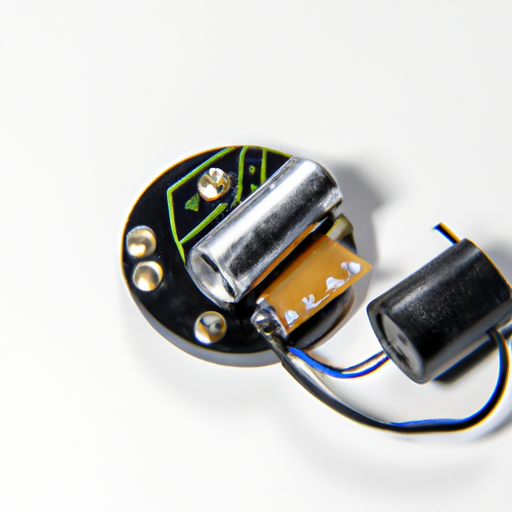
Fixed electrical sensors are an essential component in various industries, including manufacturing, automotive, and aerospace. These sensors play a crucial role in detecting changes in the environment and converting them into electrical signals for monitoring and control purposes. To ensure the reliability and accuracy of fixed electrical sensors, there are specific product standards that manufacturers must adhere to. In this article, we will explore the product standards for fixed electrical sensors and their importance in ensuring the quality and performance of these critical components.Product standards for fixed electrical sensors are established by organizations such as the International Electrotechnical Commission (IEC) and the American National Standards Institute (ANSI). These standards define the requirements and specifications that fixed electrical sensors must meet to ensure their safety, reliability, and performance. Some of the key product standards for fixed electrical sensors include:1. Accuracy: Fixed electrical sensors must meet specific accuracy requirements to ensure that they provide precise and reliable measurements. The accuracy of a sensor is typically expressed as a percentage of the full-scale output and is determined by factors such as the sensor's resolution, linearity, and hysteresis.2. Sensitivity: The sensitivity of a fixed electrical sensor refers to its ability to detect small changes in the environment and convert them into measurable electrical signals. Sensors with higher sensitivity are more responsive to changes in the environment and can provide more accurate measurements.3. Stability: Fixed electrical sensors must exhibit stable performance over time and under varying environmental conditions. Stability is essential to ensure the long-term reliability and accuracy of the sensor's measurements.4. Environmental resistance: Fixed electrical sensors are often exposed to harsh environmental conditions, such as temperature extremes, humidity, and vibration. Product standards for fixed electrical sensors specify the environmental conditions that the sensor must withstand and the level of protection required to ensure reliable operation.5. Electrical safety: Fixed electrical sensors must comply with electrical safety standards to protect users from electrical hazards. These standards define requirements for insulation, grounding, and protection against electrical shock to ensure the safe operation of the sensor.6. EMC compliance: Fixed electrical sensors must meet electromagnetic compatibility (EMC) standards to ensure that they do not interfere with other electronic devices or are not susceptible to electromagnetic interference. EMC compliance is essential for the reliable operation of sensors in industrial environments with high levels of electromagnetic noise.7. Calibration and traceability: Fixed electrical sensors must be calibrated regularly to ensure their accuracy and reliability. Product standards specify the calibration procedures and requirements for traceability to ensure that the sensor's measurements are consistent and reliable.8. Documentation and labeling: Fixed electrical sensors must be accompanied by documentation that includes information on the sensor's specifications, performance characteristics, and operating instructions. Product standards also require that sensors are labeled with essential information, such as the manufacturer's name, model number, and serial number.In addition to these product standards, manufacturers of fixed electrical sensors must also comply with industry-specific regulations and requirements. For example, sensors used in the automotive industry must meet automotive industry standards such as ISO/TS 16949, while sensors used in the aerospace industry must comply with aerospace industry standards such as AS9100.Adhering to product standards for fixed electrical sensors is essential for manufacturers to ensure the quality, reliability, and performance of their products. Compliance with these standards not only helps manufacturers meet regulatory requirements but also enhances the reputation of their products in the market. Customers can have confidence in sensors that meet product standards, knowing that they have been tested and certified to meet specific performance and safety requirements.In conclusion, product standards for fixed electrical sensors are essential for ensuring the quality, reliability, and performance of these critical components. By adhering to these standards, manufacturers can produce sensors that meet the requirements of various industries and provide accurate and reliable measurements. Compliance with product standards not only benefits manufacturers by ensuring the quality of their products but also benefits customers by providing them with sensors that meet specific performance and safety requirements.
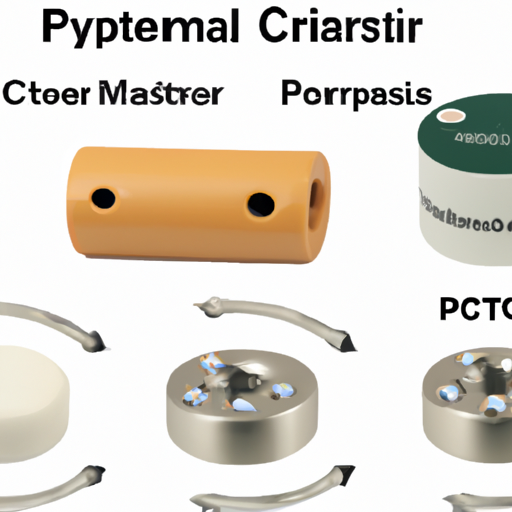
Polymer capacitors are a type of electrolytic capacitor that use conductive polymer as the electrolyte instead of liquid or gel electrolytes used in traditional electrolytic capacitors. Polymer capacitors offer several advantages over traditional electrolytic capacitors, including lower ESR (Equivalent Series Resistance), longer lifespan, and better stability over a wide range of temperatures. In recent years, polymer capacitors have become increasingly popular in a wide range of electronic devices, from consumer electronics to industrial applications.One of the leading manufacturers of polymer capacitors is Mainstream Polymer, a company known for its high-quality and reliable capacitors. Mainstream Polymer offers a wide range of polymer capacitor products, each designed to meet the specific needs of different applications. In this article, we will explore the main parameters of Mainstream Polymer's polymer capacitor product line and discuss how these parameters impact the performance and reliability of the capacitors.1. Capacitance Range:
One of the key parameters of any capacitor is its capacitance, which is a measure of the capacitor's ability to store electrical charge. Mainstream Polymer offers a wide range of capacitance values in its polymer capacitor product line, ranging from a few microfarads to several hundred microfarads. This wide range of capacitance values allows designers to choose the right capacitor for their specific application, whether it is for filtering, decoupling, or energy storage.2. Voltage Rating:
Another important parameter of polymer capacitors is their voltage rating, which indicates the maximum voltage that the capacitor can safely withstand. Mainstream Polymer's polymer capacitors are available in a wide range of voltage ratings, from a few volts to several hundred volts. This allows designers to select a capacitor that can handle the voltage requirements of their application without risking damage to the capacitor.3. Temperature Range:
Polymer capacitors are known for their excellent stability over a wide range of temperatures, making them ideal for applications that require reliable performance in harsh environments. Mainstream Polymer's polymer capacitors are designed to operate reliably over a wide temperature range, from -40°C to 105°C. This ensures that the capacitors can perform consistently in applications where temperature fluctuations are common.4. ESR (Equivalent Series Resistance):
ESR is a measure of the internal resistance of a capacitor, which can impact the capacitor's performance and efficiency. Mainstream Polymer's polymer capacitors are designed with low ESR values, ensuring that they can deliver high performance and efficiency in a wide range of applications. Low ESR values also help to reduce heat generation in the capacitor, improving its reliability and lifespan.5. Lifespan:
Polymer capacitors are known for their long lifespan compared to traditional electrolytic capacitors, thanks to their solid electrolyte construction. Mainstream Polymer's polymer capacitors are designed to have a lifespan of up to 10,000 hours, ensuring that they can provide reliable performance for many years in demanding applications. This long lifespan makes Mainstream Polymer's polymer capacitors a cost-effective and reliable choice for designers looking for durable capacitors.6. Size and Form Factor:
Mainstream Polymer offers polymer capacitors in a variety of sizes and form factors, including surface mount and through-hole configurations. This allows designers to choose a capacitor that fits their specific space and mounting requirements, making it easier to integrate the capacitor into their design. The compact size of Mainstream Polymer's polymer capacitors also helps to save space on the PCB, making them ideal for applications where board space is limited.In conclusion, Mainstream Polymer's polymer capacitor product line offers a wide range of parameters that cater to the diverse needs of designers in various industries. With their high capacitance range, voltage ratings, temperature stability, low ESR values, long lifespan, and compact form factors, Mainstream Polymer's polymer capacitors are a reliable and cost-effective choice for a wide range of applications. Whether it is for consumer electronics, automotive, industrial, or telecommunications applications, Mainstream Polymer's polymer capacitors are designed to deliver high performance and reliability, making them a preferred choice for designers worldwide.
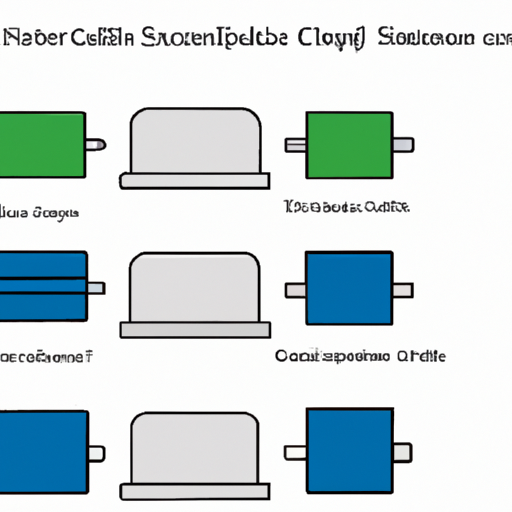
The Silicon capacitor scenario encompasses a wide range of industries that rely on this essential electronic component for various applications. Silicon capacitors are a type of capacitor that uses silicon as the dielectric material, offering high capacitance values and excellent stability over a wide range of temperatures. These capacitors are commonly used in electronic devices and systems across industries such as telecommunications, automotive, aerospace, consumer electronics, and more.Telecommunications Industry:
The telecommunications industry heavily relies on silicon capacitors for various applications, including signal processing, filtering, and power supply regulation. Silicon capacitors are used in communication equipment such as routers, switches, and base stations to ensure reliable and efficient operation. With the increasing demand for high-speed data transmission and connectivity, the telecommunications industry continues to drive the growth of the silicon capacitor market.Automotive Industry:
In the automotive industry, silicon capacitors play a crucial role in vehicle electronics, including engine control units, infotainment systems, and safety features. Silicon capacitors are used for power conditioning, noise filtering, and voltage regulation in automotive applications to ensure reliable performance and safety. As the automotive industry continues to adopt advanced technologies such as electric vehicles and autonomous driving systems, the demand for silicon capacitors is expected to grow significantly.Aerospace Industry:
The aerospace industry relies on silicon capacitors for critical applications in aircraft systems, including avionics, communication systems, and navigation equipment. Silicon capacitors are used in aerospace applications for their high reliability, temperature stability, and resistance to harsh environmental conditions. With the increasing demand for lightweight and compact electronic components in aerospace systems, silicon capacitors are becoming increasingly important for ensuring the safety and performance of aircraft.Consumer Electronics Industry:
The consumer electronics industry is a major consumer of silicon capacitors for a wide range of products, including smartphones, tablets, laptops, and wearable devices. Silicon capacitors are used in consumer electronics for power management, signal filtering, and energy storage, enabling the efficient operation of electronic devices. With the growing demand for smaller, more powerful, and energy-efficient consumer electronics, the silicon capacitor market is expected to experience significant growth in the coming years.Industrial Automation Industry:
The industrial automation industry relies on silicon capacitors for various applications, including motor control, power supply regulation, and sensor interfacing. Silicon capacitors are used in industrial automation equipment such as programmable logic controllers (PLCs), servo drives, and robotics for ensuring reliable and precise operation. With the increasing adoption of Industry 4.0 technologies such as IoT, AI, and machine learning, the demand for silicon capacitors in industrial automation is expected to increase.Overall, the Silicon capacitor scenario encompasses a diverse range of industries that rely on this essential electronic component for various applications. As technology continues to advance and industries evolve, the demand for silicon capacitors is expected to grow, driving innovation and growth in the global electronics market. With their high performance, reliability, and versatility, silicon capacitors are poised to play a key role in shaping the future of electronic devices and systems across industries.
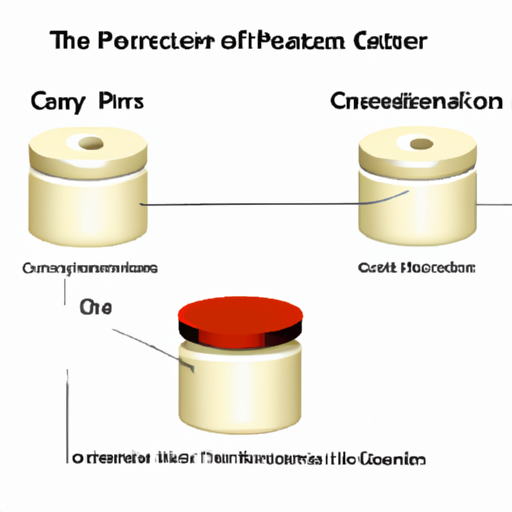
Oxidation capacitors are a type of capacitor that uses an oxide layer as the dielectric material. This type of capacitor is commonly used in electronic circuits for various applications, such as filtering, coupling, and timing. The production process for oxidation capacitors involves several steps to ensure the quality and reliability of the final product. In this article, we will discuss the common production processes for oxidation capacitors.1. Material selectionThe first step in the production of oxidation capacitors is the selection of materials. The most important material in an oxidation capacitor is the oxide layer, which serves as the dielectric material. The oxide layer is typically made of materials such as aluminum oxide or tantalum pentoxide. These materials are chosen for their high dielectric constant, low leakage current, and stability over a wide range of temperatures.In addition to the oxide layer, other materials used in the production of oxidation capacitors include the electrode materials, such as aluminum or tantalum, and the casing materials, such as plastic or ceramic. These materials are chosen for their compatibility with the oxide layer and their ability to withstand the operating conditions of the capacitor.2. Electrode formationThe next step in the production of oxidation capacitors is the formation of the electrodes. The electrodes are typically made of metal, such as aluminum or tantalum, and are coated with a thin layer of oxide to improve their conductivity and adhesion to the oxide layer. The electrodes are formed using a variety of techniques, such as sputtering, evaporation, or electroplating.Once the electrodes are formed, they are patterned onto the oxide layer using photolithography techniques. This involves applying a photoresist material to the oxide layer, exposing it to ultraviolet light through a mask, and then developing the photoresist to create the desired electrode pattern.3. Oxide layer formationAfter the electrodes are formed, the next step in the production of oxidation capacitors is the formation of the oxide layer. This is typically done using a process called anodization, which involves applying a voltage to the electrodes in an electrolyte solution to form a thin layer of oxide on the surface of the electrodes.The thickness of the oxide layer is critical to the performance of the capacitor, as it determines the capacitance and voltage rating of the capacitor. The oxide layer is typically grown to a specific thickness using controlled anodization techniques, such as pulse anodization or constant voltage anodization.4. Casing assemblyOnce the oxide layer is formed, the next step in the production of oxidation capacitors is the assembly of the casing. The casing is typically made of plastic or ceramic and serves to protect the capacitor from external environmental factors, such as moisture, dust, and mechanical stress.The electrodes and oxide layer are then encapsulated in the casing using a variety of techniques, such as molding, potting, or sealing. The casing is designed to provide a hermetic seal around the capacitor to prevent the ingress of contaminants and ensure the long-term reliability of the capacitor.5. Testing and quality controlThe final step in the production of oxidation capacitors is testing and quality control. This involves a series of electrical and mechanical tests to ensure that the capacitor meets the specifications and performance requirements of the application.Some of the common tests performed on oxidation capacitors include capacitance measurement, leakage current measurement, voltage withstand testing, and temperature cycling testing. These tests are designed to verify the electrical properties, reliability, and durability of the capacitor under various operating conditions.In addition to electrical testing, oxidation capacitors are also subjected to visual inspection and dimensional measurements to ensure that they meet the quality standards of the manufacturer. Any defects or deviations from the specifications are identified and corrected before the capacitors are shipped to customers.In conclusion, the production of oxidation capacitors involves several key processes, including material selection, electrode formation, oxide layer formation, casing assembly, and testing. By following these processes carefully and rigorously, manufacturers can ensure the quality and reliability of oxidation capacitors for a wide range of electronic applications.
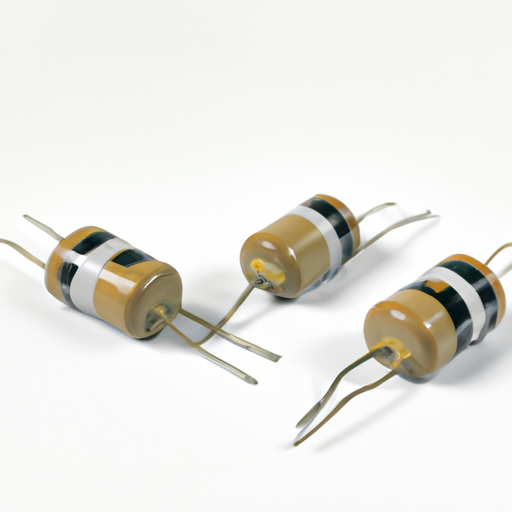
Variable capacitors are electronic components that are used to store and release electrical energy in a circuit. They are commonly used in a variety of electronic devices, such as radios, televisions, and computers. Variable capacitors have the ability to change their capacitance, or the amount of charge they can store, which makes them ideal for tuning circuits and adjusting the frequency of signals.One of the key features of variable capacitors is their ability to adjust the capacitance value. This is achieved by changing the distance between the plates of the capacitor, which alters the amount of charge that can be stored. By adjusting the capacitance, variable capacitors can be used to tune circuits to specific frequencies, allowing for precise control over the signals being transmitted or received.Another important feature of variable capacitors is their ability to handle high voltages and currents. This makes them suitable for use in a wide range of electronic applications, from low-power devices to high-power systems. Variable capacitors are designed to withstand the stresses of high voltage and current levels, ensuring reliable performance in demanding environments.Variable capacitors also offer a high level of precision and accuracy in tuning circuits. Their ability to adjust capacitance in small increments allows for fine-tuning of signals, ensuring optimal performance in electronic devices. This precision is essential in applications where signal quality is critical, such as in radio communication or audio equipment.In addition to their tuning capabilities, variable capacitors are also known for their durability and reliability. They are constructed from high-quality materials that are designed to withstand the rigors of daily use. This ensures that variable capacitors will continue to perform consistently over time, even in harsh operating conditions.Variable capacitors are available in a variety of sizes and configurations to suit different applications. They can be found in a range of capacitance values, from picofarads to microfarads, allowing for flexibility in circuit design. Variable capacitors are also available in different form factors, such as trimmer capacitors, air variable capacitors, and ceramic variable capacitors, to meet the specific requirements of different electronic devices.Overall, variable capacitors are essential components in electronic circuits that require precise tuning and control over signals. Their ability to adjust capacitance, handle high voltages and currents, offer precision tuning, and provide durability and reliability make them indispensable in a wide range of electronic applications. Whether used in radios, televisions, or computers, variable capacitors play a crucial role in ensuring optimal performance and functionality in electronic devices.

Fine-tune devices are essential tools used in various industries to make precise adjustments and calibrations to equipment and machinery. These devices come in a wide range of types and models, each designed for specific applications and requirements. In this article, we will explore some of the popular fine-tune device product types available on the market today.1. Digital MultimetersDigital multimeters are versatile tools used for measuring voltage, current, and resistance in electrical circuits. These devices typically feature a digital display that provides accurate readings of the measured values. Digital multimeters are essential for troubleshooting electrical problems, testing components, and ensuring the proper functioning of electrical systems.2. OscilloscopesOscilloscopes are electronic test instruments used to observe and analyze the waveform of electrical signals. These devices display the voltage of a signal as a function of time, allowing users to visualize the behavior of the signal. Oscilloscopes are commonly used in electronics, telecommunications, and automotive industries for testing and troubleshooting electronic circuits.3. Signal GeneratorsSignal generators are devices that produce electrical signals of various waveforms, frequencies, and amplitudes. These devices are used in electronics, telecommunications, and research laboratories for testing and calibrating electronic equipment. Signal generators are essential for generating specific signals for testing purposes, such as sine waves, square waves, and pulse signals.4. Power SuppliesPower supplies are devices that provide electrical power to electronic equipment and circuits. These devices convert AC power from the mains into DC power that can be used to power electronic devices. Power supplies come in various types, including linear power supplies, switching power supplies, and programmable power supplies. Power supplies are essential for testing and calibrating electronic equipment and ensuring proper power delivery to devices.5. Frequency CountersFrequency counters are electronic devices used to measure the frequency of an input signal. These devices display the frequency of the signal in hertz or other units of frequency. Frequency counters are commonly used in electronics, telecommunications, and radio frequency (RF) applications for measuring the frequency of signals accurately.6. Function GeneratorsFunction generators are versatile devices used to generate various types of waveforms, such as sine waves, square waves, and triangular waves. These devices are used in electronics, telecommunications, and research laboratories for testing and calibrating electronic circuits. Function generators are essential for generating specific waveforms for testing purposes and simulating real-world signals.7. LCR MetersLCR meters are specialized devices used to measure inductance, capacitance, and resistance in electronic components. These devices provide accurate measurements of the electrical properties of components, such as capacitors, inductors, and resistors. LCR meters are essential for testing and calibrating electronic components and ensuring their proper functioning in circuits.8. Spectrum AnalyzersSpectrum analyzers are electronic test instruments used to analyze the frequency spectrum of an input signal. These devices display the amplitude of the signal as a function of frequency, allowing users to identify and analyze the frequency components of the signal. Spectrum analyzers are commonly used in telecommunications, radio frequency (RF) applications, and research laboratories for analyzing signals and identifying interference.9. Network AnalyzersNetwork analyzers are specialized devices used to analyze the performance of electrical networks, such as filters, amplifiers, and antennas. These devices measure the network parameters, such as impedance, reflection coefficient, and transmission coefficient, to analyze the behavior of the network. Network analyzers are essential for testing and calibrating electrical networks and ensuring their proper performance in various applications.10. Data LoggersData loggers are devices used to record and store data from sensors and instruments over time. These devices can measure various parameters, such as temperature, humidity, pressure, and voltage, and store the data for analysis and monitoring. Data loggers are commonly used in research, industrial, and environmental applications for monitoring and recording data over extended periods.In conclusion, fine-tune devices play a crucial role in various industries for testing, calibrating, and analyzing electronic equipment and circuits. The popular product types mentioned in this article are essential tools for ensuring the proper functioning and performance of electronic systems. Whether you are a technician, engineer, or researcher, having the right fine-tune device for your specific application is essential for accurate measurements and reliable results.

Cloud mother products have become increasingly popular in recent years as more and more people are looking for natural and eco-friendly alternatives to traditional household products. These products are made from natural and sustainable materials, making them a great choice for those looking to reduce their environmental impact.There are a wide variety of Cloud mother products available on the market, each designed to meet different needs and preferences. Some of the most popular types of Cloud mother products include:1. Cleaning products: Cloud mother offers a range of cleaning products that are made from natural ingredients such as essential oils, vinegar, and baking soda. These products are free from harsh chemicals and toxins, making them safe for use around children and pets. From all-purpose cleaners to laundry detergents, Cloud mother has a solution for all of your cleaning needs.2. Personal care products: Cloud mother also offers a range of personal care products that are made from natural and organic ingredients. These products are free from synthetic fragrances, parabens, and other harmful chemicals, making them a great choice for those with sensitive skin. From shampoo and conditioner to body wash and lotion, Cloud mother has everything you need to keep your skin and hair looking and feeling great.3. Baby products: Cloud mother is known for its range of baby products that are made from natural and organic materials. From diapers and wipes to baby lotion and shampoo, Cloud mother has everything you need to care for your little one without exposing them to harmful chemicals. These products are gentle on your baby's delicate skin and are designed to keep them safe and comfortable.4. Home decor: Cloud mother also offers a range of home decor products that are made from sustainable materials such as bamboo, cork, and recycled glass. From throw pillows and blankets to wall art and vases, Cloud mother has everything you need to create a stylish and eco-friendly home. These products are not only beautiful but also help to reduce your carbon footprint and support sustainable practices.5. Kitchen products: Cloud mother offers a range of kitchen products that are made from natural and sustainable materials such as bamboo, stainless steel, and glass. From cutting boards and utensils to food storage containers and water bottles, Cloud mother has everything you need to create a more eco-friendly kitchen. These products are durable, easy to clean, and free from harmful chemicals, making them a great choice for those looking to reduce their environmental impact.In conclusion, Cloud mother products are a great choice for those looking to reduce their environmental impact and live a more sustainable lifestyle. With a wide range of products available, there is something for everyone, whether you are looking for cleaning products, personal care products, baby products, home decor, or kitchen products. By choosing Cloud mother products, you can feel good knowing that you are making a positive impact on the planet and supporting sustainable practices.
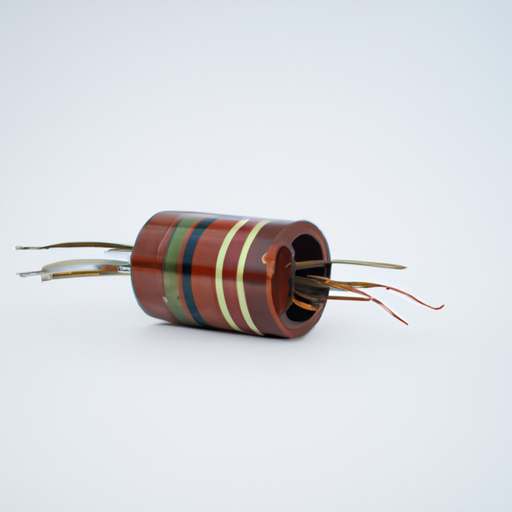
Film capacitors are a type of capacitor that is widely used in various electronic devices and applications. They are known for their high reliability, long lifespan, and excellent performance characteristics. In this article, we will explore the different types of film capacitors, their construction, working principle, advantages, and applications.Film capacitors are made of a thin plastic film that is coated with a metal layer on both sides. The film is wound into a cylindrical shape, and the metal layers act as the electrodes of the capacitor. The film material used in film capacitors can vary, with some common materials being polyester, polypropylene, and polycarbonate. These materials have excellent dielectric properties, which make them suitable for use in capacitors.There are several types of film capacitors, including metallized film capacitors, foil film capacitors, and hybrid film capacitors. Metallized film capacitors have a thin metal layer deposited on the film, while foil film capacitors have a separate metal foil as the electrode. Hybrid film capacitors combine the advantages of both metallized and foil film capacitors.The working principle of film capacitors is based on the storage of electrical energy in the electric field between the two metal layers. When a voltage is applied across the electrodes, an electric field is created in the dielectric material, which stores the energy. The capacitance of a film capacitor is determined by the area of the electrodes, the distance between them, and the dielectric constant of the film material.Film capacitors have several advantages over other types of capacitors. They have a high insulation resistance, which makes them suitable for high voltage applications. They also have a low equivalent series resistance (ESR) and equivalent series inductance (ESL), which results in low power losses and high efficiency. Film capacitors are also known for their high reliability and long lifespan, with some capacitors lasting for decades without any degradation in performance.Film capacitors are used in a wide range of applications, including power supplies, motor drives, lighting systems, audio equipment, and telecommunications devices. They are commonly used in filter circuits, timing circuits, and coupling circuits, where high stability and low losses are required. Film capacitors are also used in high-frequency applications, where their low ESR and ESL make them ideal for filtering out noise and interference.In conclusion, film capacitors are a versatile and reliable type of capacitor that is widely used in various electronic devices and applications. They offer high performance, long lifespan, and excellent stability, making them a popular choice for engineers and designers. With their low losses, high efficiency, and high insulation resistance, film capacitors are an essential component in modern electronics.
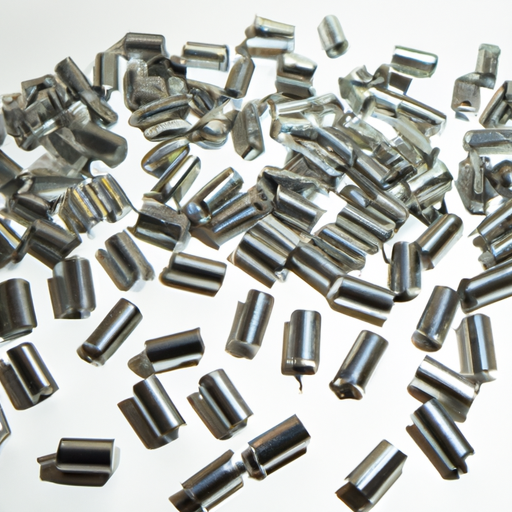
Film capacitors are a type of electronic component that is used in a wide range of applications, from consumer electronics to industrial machinery. These capacitors are known for their high reliability, long lifespan, and excellent performance characteristics, making them a popular choice for many different types of electronic devices.Film capacitors are made from a thin film of dielectric material, which is sandwiched between two metal electrodes. The dielectric material can be made from a variety of different materials, including polyester, polypropylene, and polycarbonate. The choice of dielectric material can have a significant impact on the performance of the capacitor, with different materials offering different levels of capacitance, voltage rating, and temperature stability.One of the key advantages of film capacitors is their high reliability. Unlike electrolytic capacitors, which can degrade over time and eventually fail, film capacitors have a much longer lifespan and are less prone to failure. This makes them a popular choice for applications where reliability is critical, such as in medical devices, automotive electronics, and industrial control systems.Film capacitors also offer excellent performance characteristics, with low ESR (equivalent series resistance) and ESL (equivalent series inductance), high ripple current handling capability, and low self-heating. This makes them well-suited for applications where high performance is required, such as in power supplies, motor drives, and audio equipment.Another advantage of film capacitors is their wide range of capacitance values and voltage ratings. Film capacitors are available in a wide range of capacitance values, from picofarads to hundreds of microfarads, and voltage ratings, from a few volts to several kilovolts. This makes them suitable for a wide range of applications, from filtering and decoupling in digital circuits to energy storage in high-voltage power supplies.In addition to their high reliability and excellent performance characteristics, film capacitors are also environmentally friendly. Unlike electrolytic capacitors, which contain toxic chemicals such as lead and mercury, film capacitors are made from non-toxic materials and are recyclable. This makes them a more sustainable choice for electronic devices, particularly in applications where environmental impact is a concern.Film capacitors are used in a wide range of applications, including power supplies, motor drives, audio equipment, lighting systems, and telecommunications equipment. They are also used in automotive electronics, medical devices, and industrial control systems. In each of these applications, film capacitors provide reliable performance, long lifespan, and excellent performance characteristics, making them an essential component in modern electronic devices.Overall, film capacitors are a versatile and reliable electronic component that is used in a wide range of applications. With their high reliability, excellent performance characteristics, and environmental friendliness, film capacitors are a popular choice for many different types of electronic devices. Whether you are designing a power supply, motor drive, audio amplifier, or any other electronic device, film capacitors are an excellent choice for ensuring reliable and high-performance operation.

Film capacitors are widely used in various electronic devices and systems due to their high reliability, long lifespan, and excellent electrical performance. The production process of film capacitors involves several steps that are crucial in ensuring the quality and performance of the final product. In this article, we will discuss the mainstream film capacitor production process in detail.1. Film Selection: The first step in the production of film capacitors is the selection of the film material. The film material used in film capacitors is typically made of a polymer such as polypropylene, polyester, or polycarbonate. The choice of film material depends on the specific requirements of the capacitor, such as voltage rating, capacitance value, and temperature stability.2. Film Coating: Once the film material is selected, it is coated with a thin layer of metal on both sides. The metal coating is typically made of aluminum, zinc, or a combination of both. The metal coating serves as the electrode of the capacitor and helps to improve the electrical performance of the capacitor.3. Winding: After the film material is coated with metal, it is wound into a cylindrical shape to form the capacitor element. The winding process is done using automated machinery that ensures precise winding of the film material to achieve the desired capacitance value and voltage rating.4. Impregnation: Once the film material is wound into a cylindrical shape, it is impregnated with a dielectric fluid to improve the electrical performance and reliability of the capacitor. The dielectric fluid used in film capacitors is typically a high-quality oil or resin that helps to reduce the risk of electrical breakdown and improve the thermal stability of the capacitor.5. Encapsulation: After impregnation, the capacitor element is encapsulated in a protective casing to protect it from external environmental factors such as moisture, dust, and mechanical stress. The encapsulation process is done using a high-quality plastic or metal casing that is designed to provide excellent insulation and mechanical protection to the capacitor element.6. Terminal Attachment: Once the capacitor element is encapsulated, the next step is to attach the terminals to the capacitor. The terminals are typically made of metal and are attached to the capacitor element using soldering or welding techniques. The terminals serve as the connection points for the capacitor in the electronic circuit.7. Testing and Quality Control: After the terminals are attached, the film capacitors undergo rigorous testing and quality control procedures to ensure that they meet the required specifications and performance standards. The testing process includes electrical testing, thermal testing, and mechanical testing to verify the capacitance value, voltage rating, and reliability of the capacitor.8. Packaging and Labeling: Once the film capacitors pass the testing and quality control procedures, they are packaged and labeled for shipment to customers. The packaging of film capacitors is done using high-quality materials that provide excellent protection during transportation and storage. The labeling of film capacitors includes important information such as capacitance value, voltage rating, and manufacturer's logo.In conclusion, the production process of film capacitors involves several critical steps that are essential in ensuring the quality, reliability, and performance of the final product. By following a systematic and well-defined production process, manufacturers can produce high-quality film capacitors that meet the requirements of various electronic applications.
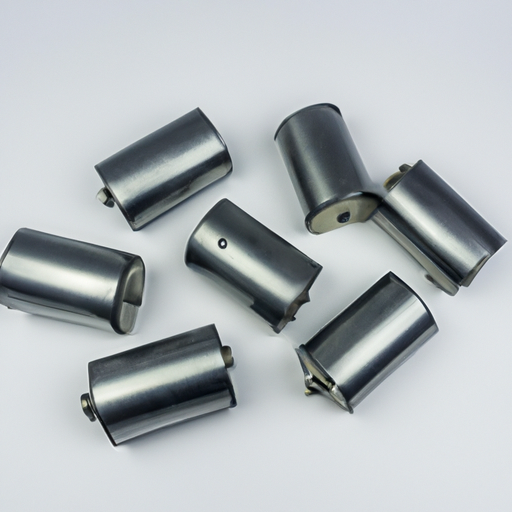
Film capacitors are a type of capacitor that is widely used in various electronic devices and applications. They are known for their high reliability, long lifespan, and excellent performance characteristics. In order to ensure the quality and reliability of film capacitors, there are certain product standards that manufacturers must adhere to. These standards are set by various organizations and regulatory bodies to ensure that film capacitors meet certain criteria for performance, safety, and reliability.One of the most important product standards for film capacitors is the IEC 60384 standard, which is set by the International Electrotechnical Commission (IEC). This standard specifies the general requirements for film capacitors, including their construction, materials, performance characteristics, and testing methods. It covers various types of film capacitors, including metallized film capacitors, polypropylene film capacitors, and polyester film capacitors.According to the IEC 60384 standard, film capacitors must meet certain criteria for their electrical properties, such as capacitance, voltage rating, and temperature stability. Capacitance is the ability of a capacitor to store electrical charge, and it is measured in farads (F). The capacitance of a film capacitor must be within a certain tolerance range specified by the standard, typically around ±5% or ±10% of the rated value.Voltage rating is another important electrical property of film capacitors, as it determines the maximum voltage that the capacitor can withstand without breaking down. Film capacitors are available in various voltage ratings, ranging from a few volts to several kilovolts. The voltage rating of a film capacitor must be specified by the manufacturer and must be clearly marked on the capacitor itself.Temperature stability is also a critical factor in the performance of film capacitors, as their capacitance can vary with temperature changes. The IEC 60384 standard specifies the temperature coefficient of film capacitors, which is a measure of how much the capacitance changes with temperature. Film capacitors with a low temperature coefficient are more stable and reliable over a wide temperature range.In addition to electrical properties, film capacitors must also meet certain mechanical and environmental requirements set by the IEC 60384 standard. For example, film capacitors must be able to withstand mechanical stress, such as vibration and shock, without degrading their performance. They must also be resistant to environmental factors such as humidity, temperature extremes, and chemical exposure.Another important product standard for film capacitors is the UL 810 standard, which is set by Underwriters Laboratories (UL). This standard covers safety requirements for film capacitors used in electrical equipment and appliances. Film capacitors that meet the UL 810 standard have been tested and certified to ensure that they are safe to use in various applications.The UL 810 standard specifies requirements for the construction, materials, and performance of film capacitors, as well as testing methods to ensure their safety and reliability. Film capacitors that meet the UL 810 standard are marked with the UL logo, indicating that they have been tested and certified by Underwriters Laboratories.In addition to the IEC 60384 and UL 810 standards, there are other product standards and specifications that may apply to film capacitors, depending on their intended use and application. For example, film capacitors used in automotive applications must meet the AEC-Q200 standard, which is set by the Automotive Electronics Council (AEC) and specifies requirements for electronic components used in automotive systems.Overall, product standards for film capacitors are essential for ensuring their quality, reliability, and safety. By adhering to these standards, manufacturers can produce film capacitors that meet the requirements of various applications and industries, providing reliable performance and long lifespan for electronic devices and equipment.
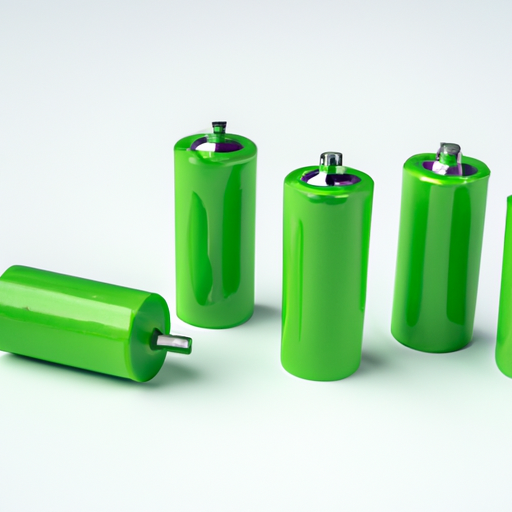
The world of energy storage is constantly evolving, with new technologies and advancements being made all the time. One of the most exciting developments in recent years is the supercapacitor, a device that has the potential to revolutionize the way we store and use energy.Supercapacitors, also known as ultracapacitors, are energy storage devices that can store and release energy much faster than traditional batteries. They are able to charge and discharge in a matter of seconds, making them ideal for applications where rapid energy storage and release is required.One of the key advantages of supercapacitors is their long lifespan. While traditional batteries degrade over time and lose their ability to hold a charge, supercapacitors can be charged and discharged hundreds of thousands of times without losing their effectiveness. This makes them ideal for use in applications where long-term reliability is crucial.Another advantage of supercapacitors is their high power density. This means that they can store a large amount of energy in a small space, making them ideal for use in compact electronic devices or electric vehicles. Supercapacitors are also able to operate over a wide range of temperatures, making them suitable for use in a variety of environments.Despite these advantages, supercapacitors have not yet reached their full potential. Current supercapacitors are limited in the amount of energy they can store, which has prevented them from being used in larger-scale applications. However, researchers and engineers are constantly working to improve the energy density of supercapacitors, with the goal of making them a viable alternative to traditional batteries.One company that is at the forefront of supercapacitor technology is Maxwell Technologies. Maxwell Technologies has been developing supercapacitors for over 50 years, and has recently announced the development of a new supercapacitor that promises to revolutionize the energy storage industry.The new supercapacitor, known as the Maxwell X, is set to be released in the coming months. The Maxwell X is a game-changer in the world of energy storage, with a significantly higher energy density than current supercapacitors. This means that the Maxwell X will be able to store more energy in a smaller space, making it ideal for use in a wide range of applications.One of the key features of the Maxwell X is its fast charging and discharging capabilities. The Maxwell X is able to charge and discharge in a matter of seconds, making it ideal for use in applications where rapid energy storage and release is required. This makes the Maxwell X ideal for use in electric vehicles, where quick charging times are crucial.Another key feature of the Maxwell X is its long lifespan. The Maxwell X is able to be charged and discharged hundreds of thousands of times without losing its effectiveness, making it ideal for use in applications where long-term reliability is crucial. This makes the Maxwell X a cost-effective solution for energy storage, as it will not need to be replaced as frequently as traditional batteries.The Maxwell X is also able to operate over a wide range of temperatures, making it suitable for use in a variety of environments. This makes the Maxwell X ideal for use in applications where extreme temperatures are a concern, such as in aerospace or military applications.Overall, the Maxwell X promises to be a game-changer in the world of energy storage. With its high energy density, fast charging and discharging capabilities, long lifespan, and wide operating temperature range, the Maxwell X is set to revolutionize the way we store and use energy. Keep an eye out for the release of the Maxwell X in the coming months, as it is sure to make a big impact on the energy storage industry.
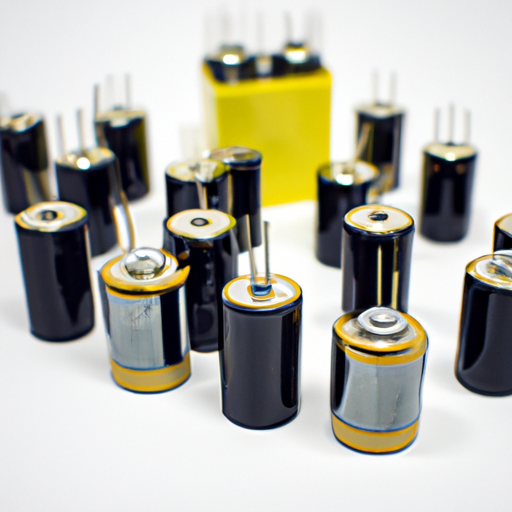
Super capacitors, also known as ultracapacitors or electric double-layer capacitors, are energy storage devices that have gained popularity in recent years due to their high power density, fast charging and discharging capabilities, and long cycle life. These devices are used in a wide range of applications, from consumer electronics to renewable energy systems.In order to ensure the quality and performance of super capacitors, there are several product standards that manufacturers must adhere to. These standards cover various aspects of the design, manufacturing, testing, and performance of super capacitors, and help to ensure that these devices meet the requirements of their intended applications.One of the key product standards for super capacitors is the IEC 62391 standard, which provides guidelines for the testing and performance of electric double-layer capacitors. This standard covers parameters such as capacitance, equivalent series resistance (ESR), leakage current, and self-discharge rate, and sets limits for these parameters to ensure the quality and reliability of the super capacitor.Another important product standard for super capacitors is the UL 810A standard, which covers safety requirements for electric double-layer capacitors. This standard specifies requirements for insulation, overcurrent protection, and temperature limits, among other things, to ensure that super capacitors are safe to use in various applications.In addition to these standards, there are also industry-specific standards that apply to super capacitors used in specific applications. For example, super capacitors used in automotive applications must meet the requirements of the AEC-Q200 standard, which covers the testing and performance of electronic components used in automotive systems.Overall, adherence to product standards is essential for ensuring the quality, reliability, and safety of super capacitors. By following these standards, manufacturers can produce super capacitors that meet the requirements of their intended applications and provide reliable performance over their operational lifetime.In conclusion, super capacitors are versatile energy storage devices that offer high power density, fast charging and discharging capabilities, and long cycle life. In order to ensure the quality and performance of these devices, manufacturers must adhere to product standards that cover various aspects of design, manufacturing, testing, and performance. By following these standards, manufacturers can produce super capacitors that meet the requirements of their intended applications and provide reliable performance for a wide range of industries.
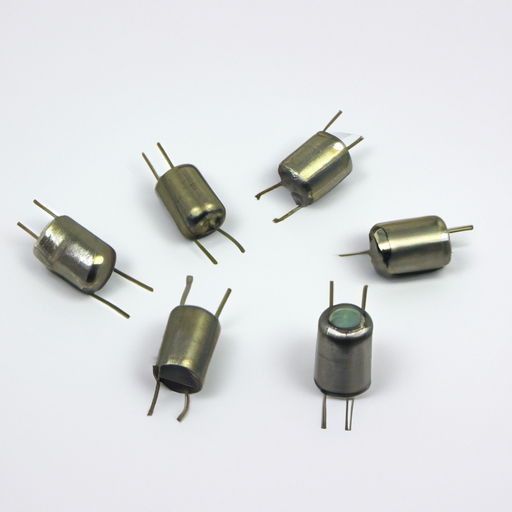
Ceramic capacitors are a type of electronic component that is widely used in various electronic devices and circuits. They are essential for storing and releasing electrical energy in a controlled manner, making them crucial for the proper functioning of many electronic systems. In this article, we will explore the different types of ceramic capacitors, their applications, advantages, and disadvantages.Ceramic capacitors are made of ceramic materials, such as barium titanate or titanium dioxide, which have high dielectric constants. This allows them to store a large amount of electrical energy in a small volume. The ceramic material is sandwiched between two metal plates, which act as the electrodes of the capacitor. When a voltage is applied across the electrodes, the ceramic material becomes polarized, creating an electric field that stores energy.There are several different types of ceramic capacitors, each with its own unique characteristics and applications. The most common types include:1. Multilayer ceramic capacitors (MLCCs): These are the most widely used type of ceramic capacitors. They consist of multiple layers of ceramic material stacked on top of each other, with alternating layers of metal electrodes. This design allows for a high capacitance in a small package size, making MLCCs ideal for compact electronic devices.2. Ceramic disc capacitors: These capacitors have a disc-shaped ceramic body with metal electrodes on either side. They are typically used in high-voltage applications, such as power supplies and motor drives.3. Ceramic chip capacitors: These capacitors are similar to MLCCs but are designed in a chip form factor, making them suitable for surface-mount applications. They are commonly used in consumer electronics, telecommunications equipment, and automotive systems.4. High-voltage ceramic capacitors: These capacitors are designed to withstand high voltages, making them suitable for applications that require high insulation resistance and breakdown voltage. They are commonly used in power distribution systems, medical equipment, and industrial machinery.Ceramic capacitors have several advantages that make them popular in the electronics industry. One of the main advantages is their high capacitance density, which allows for a large capacitance in a small package size. This makes them ideal for compact electronic devices where space is limited. Additionally, ceramic capacitors have a low equivalent series resistance (ESR) and equivalent series inductance (ESL), which results in high efficiency and low power losses.Another advantage of ceramic capacitors is their excellent stability over a wide range of temperatures and frequencies. They have a low temperature coefficient, meaning that their capacitance value remains relatively constant over a wide temperature range. This makes them suitable for applications that require precise and stable capacitance values, such as in precision instrumentation and communication systems.Despite their many advantages, ceramic capacitors also have some limitations. One of the main drawbacks is their limited voltage rating compared to other types of capacitors, such as electrolytic capacitors. This can be a limiting factor in high-voltage applications where a higher voltage rating is required. Additionally, ceramic capacitors are more prone to microphonic effects, which can cause noise and interference in sensitive electronic circuits.In conclusion, ceramic capacitors are an essential component in modern electronic devices and circuits. They offer high capacitance density, low ESR and ESL, excellent stability, and a wide range of applications. While they have some limitations, such as limited voltage ratings and susceptibility to microphonic effects, their advantages far outweigh their drawbacks. As technology continues to advance, ceramic capacitors will continue to play a crucial role in the development of innovative electronic systems.
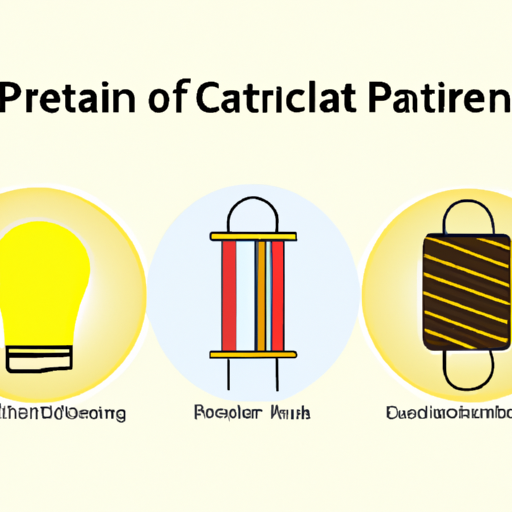
Ceramic capacitors are essential components in a wide range of electronic devices, from smartphones and laptops to medical equipment and automotive systems. These capacitors are used to store and release electrical energy, helping to regulate voltage and filter out noise in electronic circuits. As such, they play a crucial role in ensuring the proper functioning of these devices.The ceramic capacitor industry is a highly competitive and rapidly evolving sector, with companies constantly striving to develop new and improved technologies to meet the growing demand for smaller, more efficient, and higher-performing capacitors. As a result, patents play a crucial role in protecting these innovations and giving companies a competitive edge in the market.Several industries are particularly important in terms of the patents related to ceramic capacitors. These industries include:1. Electronics: The electronics industry is the largest consumer of ceramic capacitors, with applications ranging from consumer electronics to industrial equipment. Companies in this sector are constantly developing new technologies to improve the performance and reliability of ceramic capacitors, leading to a significant number of patents in this field.2. Automotive: The automotive industry is another major consumer of ceramic capacitors, with applications in engine control units, airbag systems, and other electronic components. As vehicles become increasingly electrified and connected, the demand for ceramic capacitors in the automotive sector is expected to grow, driving further innovation and patent activity.3. Aerospace and defense: The aerospace and defense industries have stringent requirements for reliability and performance, making ceramic capacitors a critical component in a wide range of applications, from avionics to missile guidance systems. Companies in these sectors are constantly developing new technologies to meet these demanding requirements, leading to a significant number of patents related to ceramic capacitors.4. Medical: The medical industry is another important consumer of ceramic capacitors, with applications in medical devices such as pacemakers, defibrillators, and imaging equipment. As medical devices become increasingly sophisticated and miniaturized, the demand for ceramic capacitors with higher performance and reliability is expected to grow, driving further innovation and patent activity in this sector.5. Telecommunications: The telecommunications industry is another key consumer of ceramic capacitors, with applications in network infrastructure, mobile devices, and satellite communications. As the demand for high-speed data transmission and connectivity continues to grow, companies in the telecommunications sector are developing new technologies to improve the performance and reliability of ceramic capacitors, leading to a significant number of patents in this field.In conclusion, the ceramic capacitor industry is a dynamic and competitive sector with significant patent activity in a wide range of industries, including electronics, automotive, aerospace and defense, medical, and telecommunications. Companies in these sectors are constantly developing new technologies to improve the performance and reliability of ceramic capacitors, driving innovation and patent activity in the field. As the demand for smaller, more efficient, and higher-performing capacitors continues to grow, patents will play a crucial role in protecting these innovations and giving companies a competitive edge in the market.
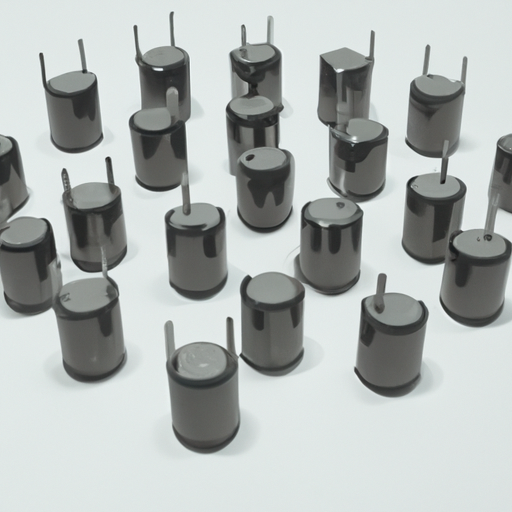
Capacitors are essential components in electronic devices, used to store and release electrical energy. Among the various types of capacitors available, tantalum capacitors are widely used in electronic circuits due to their high capacitance, stability, and reliability. In this article, we will explore the mainstream production process of tantalum capacitors.Tantalum capacitors are made from tantalum metal, which is a rare and expensive metal. Tantalum is known for its high melting point, corrosion resistance, and excellent conductivity, making it an ideal material for capacitors. The production process of tantalum capacitors involves several steps, including tantalum powder production, capacitor assembly, and testing.Tantalum Powder Production:The first step in the production of tantalum capacitors is the production of tantalum powder. Tantalum ore is mined from the earth and processed to extract tantalum metal. The tantalum metal is then converted into tantalum powder through a process called powder metallurgy.In the powder metallurgy process, tantalum metal is crushed into small particles and then mixed with a binder material to form a paste. The paste is then pressed into a mold to form a compacted powder. The compacted powder is then sintered at high temperatures to form solid tantalum powder.The tantalum powder is then processed further to produce tantalum pellets, which are used as the raw material for capacitor production. The tantalum pellets are chemically treated to remove impurities and contaminants, ensuring the purity and quality of the tantalum material.Capacitor Assembly:Once the tantalum powder is produced, it is ready to be used in the assembly of tantalum capacitors. The capacitor assembly process involves several steps, including pellet formation, electrode deposition, and encapsulation.1. Pellet Formation: The tantalum pellets are formed into the desired shape and size for the capacitor. The pellets are typically cylindrical in shape, with a thin layer of tantalum oxide on the surface to act as the dielectric material.2. Electrode Deposition: The tantalum pellets are then coated with a conductive material, such as manganese dioxide, to form the capacitor's electrodes. The electrodes are deposited on the surface of the tantalum pellets using a process called sputtering or electroplating.3. Encapsulation: Once the electrodes are deposited, the tantalum pellets are encapsulated in a protective casing to prevent damage and ensure the stability of the capacitor. The casing is typically made of epoxy resin or other insulating materials.Testing:After the tantalum capacitors are assembled, they undergo rigorous testing to ensure their quality and performance. The capacitors are tested for capacitance, voltage rating, leakage current, and other electrical parameters to meet the specifications required for electronic applications.The testing process involves subjecting the capacitors to various electrical and environmental conditions, such as temperature, humidity, and vibration, to simulate real-world operating conditions. The capacitors that pass the testing process are then labeled and packaged for distribution to electronic manufacturers.In conclusion, the production process of tantalum capacitors involves several steps, including tantalum powder production, capacitor assembly, and testing. Tantalum capacitors are essential components in electronic devices, providing high capacitance, stability, and reliability for a wide range of applications. By understanding the mainstream production process of tantalum capacitors, electronic manufacturers can ensure the quality and performance of their products.
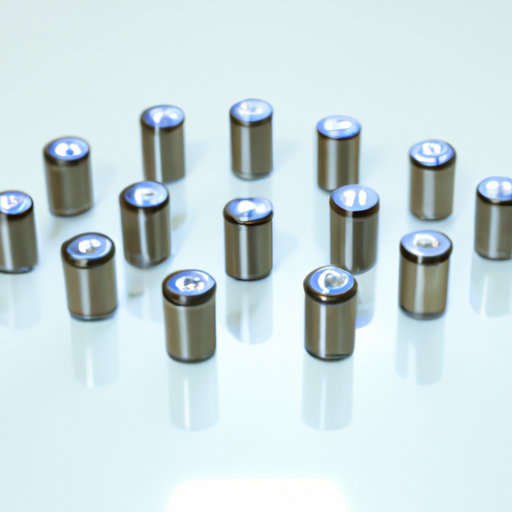
Capacitors are essential components in electronic devices, used to store and release electrical energy. Among the various types of capacitors available in the market, tantalum capacitors are widely used due to their high capacitance, stability, and reliability. Tantalum capacitors are made from tantalum, a rare metal known for its high corrosion resistance and excellent conductivity. In this article, we will explore the mainstream production process of tantalum capacitors.Tantalum capacitors are typically produced through a series of steps that involve mining, refining, processing, and manufacturing. The production process of tantalum capacitors can be divided into the following stages:1. Tantalum Mining: Tantalum is a rare metal found in various minerals, such as tantalite and columbite. The mining of tantalum involves extracting the ore from the earth's crust and processing it to obtain tantalum concentrate. Tantalum mining is a complex and labor-intensive process that requires specialized equipment and expertise.2. Tantalum Refining: Once the tantalum ore is extracted, it is refined to remove impurities and obtain pure tantalum metal. The refining process involves crushing the ore, leaching it with acid to dissolve the tantalum, and then precipitating the tantalum as a powder. The powder is then sintered to form tantalum metal, which is further processed into tantalum capacitors.3. Tantalum Processing: The tantalum metal obtained from the refining process is processed into tantalum powder, which is used as the raw material for manufacturing tantalum capacitors. The tantalum powder is mixed with other materials, such as manganese dioxide and graphite, to form a tantalum capacitor cathode.4. Tantalum Capacitor Manufacturing: The manufacturing of tantalum capacitors involves several steps, including forming the tantalum powder into a pellet, sintering the pellet to form a solid capacitor cathode, and coating the cathode with a dielectric material. The dielectric material is typically a thin layer of tantalum pentoxide, which acts as an insulator between the cathode and the anode.5. Tantalum Capacitor Assembly: Once the cathode is coated with the dielectric material, it is assembled with an anode and encapsulated in a protective casing. The anode is typically made of a conductive material, such as silver or copper, and is connected to the cathode through a lead wire. The casing is made of a non-conductive material, such as epoxy resin, to protect the capacitor from external elements.6. Tantalum Capacitor Testing: After assembly, tantalum capacitors undergo rigorous testing to ensure their quality and performance. The capacitors are tested for capacitance, voltage rating, leakage current, and other electrical properties to ensure they meet the required specifications. Any defective capacitors are rejected, while the rest are packaged and shipped to customers.Overall, the production process of tantalum capacitors is complex and requires specialized equipment, expertise, and quality control measures. Tantalum capacitors are widely used in various electronic devices, such as smartphones, laptops, and medical devices, due to their high performance and reliability. As the demand for electronic devices continues to grow, the production of tantalum capacitors is expected to increase, driving the need for efficient and sustainable production processes.
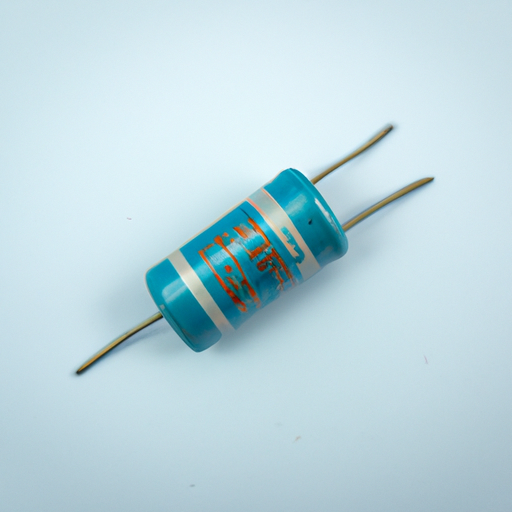
A tantalum capacitor, also known as a tantalum electrolytic capacitor, is a type of capacitor that uses tantalum metal as one of the electrodes. Tantalum capacitors are known for their high capacitance values, low leakage current, and stable performance over a wide range of temperatures. In this article, we will explore the construction, properties, applications, advantages, and limitations of tantalum capacitors.Construction of Tantalum CapacitorsTantalum capacitors are typically constructed using a tantalum metal powder that is compacted into a pellet shape and then sintered at high temperatures to form a solid tantalum slug. This tantalum slug serves as the anode of the capacitor. The cathode of the capacitor is typically made of a conductive material such as manganese dioxide or a conductive polymer.The tantalum slug is then coated with a thin layer of tantalum pentoxide, which serves as the dielectric of the capacitor. The dielectric layer is very thin, typically only a few micrometers thick, which allows for high capacitance values in a small package. The cathode material is then applied to the surface of the dielectric layer, forming the second electrode of the capacitor.The tantalum capacitor is then encapsulated in a protective casing, typically made of epoxy or a similar material. The casing is marked with the capacitance value, voltage rating, and other relevant information. Tantalum capacitors are available in a variety of package sizes and shapes, including surface mount and through-hole configurations.Properties of Tantalum CapacitorsTantalum capacitors have several key properties that make them ideal for a wide range of applications. One of the most important properties of tantalum capacitors is their high capacitance values. Tantalum capacitors can achieve capacitance values that are several orders of magnitude higher than other types of capacitors, such as ceramic or aluminum electrolytic capacitors.Another important property of tantalum capacitors is their low leakage current. Tantalum capacitors have a very low leakage current compared to other types of capacitors, which makes them ideal for applications where low power consumption is important. Tantalum capacitors also have a high ripple current rating, which allows them to handle high-frequency AC signals with minimal distortion.Tantalum capacitors are also known for their stability over a wide range of temperatures. Tantalum capacitors can operate reliably in temperatures ranging from -55°C to 125°C, making them suitable for use in harsh environments. Tantalum capacitors also have a long service life, with a typical lifespan of 10 to 20 years under normal operating conditions.Applications of Tantalum CapacitorsTantalum capacitors are used in a wide range of electronic devices and systems. One common application of tantalum capacitors is in power supply circuits, where they are used to filter out noise and stabilize the voltage output. Tantalum capacitors are also used in audio equipment, where they are used to smooth out the signal and improve sound quality.Tantalum capacitors are also used in telecommunications equipment, medical devices, and automotive electronics. Tantalum capacitors are particularly well-suited for applications where high capacitance values, low leakage current, and stable performance are required. Tantalum capacitors are also used in military and aerospace applications, where reliability and performance are critical.Advantages of Tantalum CapacitorsTantalum capacitors offer several advantages over other types of capacitors. One of the main advantages of tantalum capacitors is their high capacitance values. Tantalum capacitors can achieve capacitance values that are several orders of magnitude higher than other types of capacitors, which allows for smaller and more compact designs.Another advantage of tantalum capacitors is their low leakage current. Tantalum capacitors have a very low leakage current compared to other types of capacitors, which makes them ideal for applications where low power consumption is important. Tantalum capacitors also have a high ripple current rating, which allows them to handle high-frequency AC signals with minimal distortion.Tantalum capacitors are also known for their stability over a wide range of temperatures. Tantalum capacitors can operate reliably in temperatures ranging from -55°C to 125°C, making them suitable for use in harsh environments. Tantalum capacitors also have a long service life, with a typical lifespan of 10 to 20 years under normal operating conditions.Limitations of Tantalum CapacitorsWhile tantalum capacitors offer many advantages, they also have some limitations that should be considered. One limitation of tantalum capacitors is their relatively high cost compared to other types of capacitors, such as ceramic or aluminum electrolytic capacitors. Tantalum capacitors are more expensive to manufacture, which can impact the overall cost of a project.Another limitation of tantalum capacitors is their sensitivity to overvoltage conditions. Tantalum capacitors are prone to failure if they are subjected to voltages that exceed their rated voltage. This can be a concern in applications where voltage spikes or surges are common. Proper voltage derating and overvoltage protection should be implemented to prevent damage to tantalum capacitors.Tantalum capacitors are also sensitive to reverse polarity conditions. If a tantalum capacitor is connected with the wrong polarity, it can lead to catastrophic failure, including venting or even explosion. Proper polarity protection should be implemented to prevent damage to tantalum capacitors.In conclusion, tantalum capacitors are a versatile and reliable type of capacitor that offers high capacitance values, low leakage current, and stable performance over a wide range of temperatures. Tantalum capacitors are used in a wide range of electronic devices and systems, where high performance and reliability are required. While tantalum capacitors have some limitations, such as their cost and sensitivity to overvoltage conditions, they remain a popular choice for many applications.
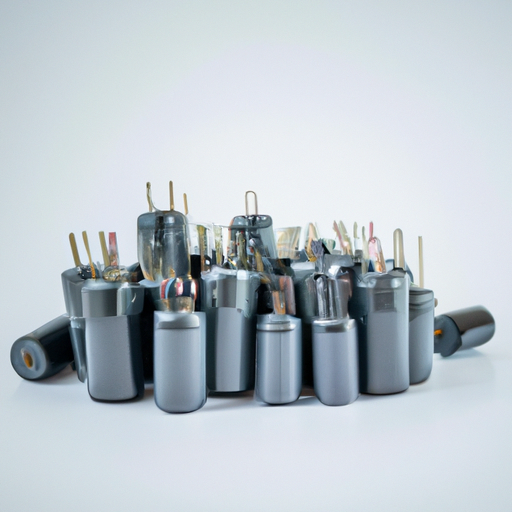
Aluminum electrolytic capacitors are a type of capacitor that is widely used in various electronic devices and equipment. These capacitors have specific market policies that govern their production, distribution, and use. In this article, we will discuss the market policies of aluminum electrolytic capacitors and how they impact the industry.One of the key market policies for aluminum electrolytic capacitors is quality control. These capacitors are used in critical electronic applications, such as power supplies, audio equipment, and industrial machinery. As such, it is essential that they meet strict quality standards to ensure reliable performance and safety. Manufacturers of aluminum electrolytic capacitors are required to adhere to industry standards and regulations to ensure that their products meet the necessary quality requirements.Another important market policy for aluminum electrolytic capacitors is environmental regulations. These capacitors contain materials that can be harmful to the environment if not disposed of properly. As a result, manufacturers are required to comply with regulations regarding the disposal and recycling of aluminum electrolytic capacitors. This includes ensuring that the capacitors are properly recycled at the end of their life cycle and that any hazardous materials are disposed of in a safe and environmentally friendly manner.In addition to quality control and environmental regulations, market policies for aluminum electrolytic capacitors also include pricing and competition. The market for capacitors is highly competitive, with many manufacturers vying for market share. As a result, pricing policies play a significant role in determining the success of a manufacturer in the market. Manufacturers must carefully consider their pricing strategies to remain competitive while still maintaining profitability.Furthermore, market policies for aluminum electrolytic capacitors also include regulations regarding product safety and performance. These capacitors are used in a wide range of applications, from consumer electronics to industrial machinery. As such, they must meet strict safety and performance standards to ensure that they do not pose a risk to users or damage equipment. Manufacturers are required to test their capacitors rigorously to ensure that they meet these standards and comply with regulations.Overall, the market policies for aluminum electrolytic capacitors are designed to ensure that these critical electronic components are produced and used safely and effectively. Manufacturers must adhere to quality control, environmental regulations, pricing strategies, and safety standards to remain competitive in the market. By following these policies, manufacturers can ensure that their aluminum electrolytic capacitors meet the necessary requirements and continue to be a vital component in electronic devices and equipment.

Aluminum electrolytic capacitors are a type of capacitor that is widely used in various electronic devices and systems. They are known for their high capacitance values and ability to handle high voltage levels, making them ideal for applications that require large amounts of energy storage. In this article, we will explore the main application direction of aluminum electrolytic capacitors and discuss their advantages and limitations.One of the main application directions of aluminum electrolytic capacitors is in power supply systems. These capacitors are commonly used in power supplies to filter out noise and ripple voltage, ensuring a stable and clean power output. They are also used in voltage regulation circuits to smooth out fluctuations in voltage levels and provide a constant supply of power to electronic devices. In addition, aluminum electrolytic capacitors are used in energy storage applications, such as in uninterruptible power supplies (UPS) and energy storage systems, where they store energy and provide backup power in case of a power outage.Another important application direction of aluminum electrolytic capacitors is in audio and video equipment. These capacitors are used in audio amplifiers, speakers, and other audio devices to filter out noise and improve the quality of sound output. They are also used in video equipment, such as televisions and monitors, to stabilize voltage levels and ensure a clear and stable picture quality. Aluminum electrolytic capacitors are also used in lighting systems, such as LED drivers and ballasts, to regulate voltage levels and provide a constant supply of power to the lighting fixtures.Aluminum electrolytic capacitors are also commonly used in motor drives and control systems. They are used in motor drives to smooth out voltage spikes and provide a constant supply of power to the motor, ensuring smooth and efficient operation. In control systems, these capacitors are used to store energy and provide a buffer against voltage fluctuations, ensuring reliable and stable performance of the system. Additionally, aluminum electrolytic capacitors are used in automotive applications, such as in car audio systems, engine control units, and lighting systems, where they provide energy storage and voltage regulation functions.One of the key advantages of aluminum electrolytic capacitors is their high capacitance values, which allow them to store large amounts of energy in a relatively small package. This makes them ideal for applications that require high energy storage capacity, such as in power supply systems and energy storage applications. Another advantage of aluminum electrolytic capacitors is their ability to handle high voltage levels, making them suitable for applications that require high voltage operation, such as in motor drives and power supplies.Despite their advantages, aluminum electrolytic capacitors also have some limitations. One of the main limitations is their relatively short lifespan compared to other types of capacitors, such as ceramic and tantalum capacitors. Aluminum electrolytic capacitors have a limited number of charge-discharge cycles, and their performance degrades over time, especially at high temperatures. This can be a concern in applications that require long-term reliability and durability, such as in automotive and industrial applications.In conclusion, aluminum electrolytic capacitors are widely used in various electronic devices and systems, thanks to their high capacitance values and ability to handle high voltage levels. They are commonly used in power supply systems, audio and video equipment, motor drives, and control systems, among other applications. While they offer advantages such as high energy storage capacity and voltage handling capabilities, they also have limitations such as a relatively short lifespan and performance degradation over time. Overall, aluminum electrolytic capacitors are a versatile and reliable component that plays a crucial role in the functioning of many electronic devices and systems.